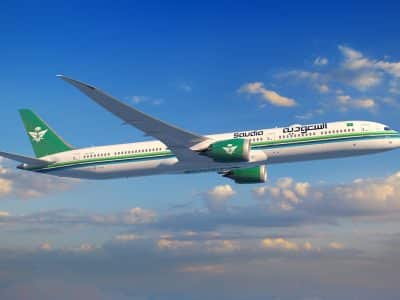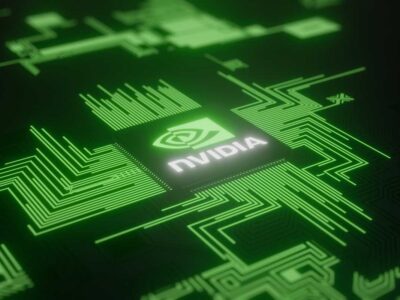So you want to make some serious cash? Try smuggling, racketeering, money laundering and intimidation. It sure worked for the Italian Mafia who last year raked in $106.5bn of profit as the rest of the country saw its economy shrink by over 5 percent. Who says crime doesn’t pay?
In politics timing is everything. On January 28, Italian Prime Minister Silvio Berlusconi was putting the finishing touches to an ambitious plan to fight organised crime. It was a plan he promised the media would be “extraordinary.”
Shortly after lunch, Berlusconi appeared at a news conference in the southern Italian city of Reggio Calabria – the original base of the mafia – where he criticised movies and television shows that fictionalised the organisation for giving Italy a “negative image abroad”. It was “an ugly trend” which he would soon end, he promised.
Less than 24 hours earlier, as Berlusconi was finalising his speech, one of his advisors handed him a seven page report compiled by the Rome-based anti-racketeering group, SOS Impresa. “It’s not good news. Maybe we should delay your speech,” the advisor reportedly warned him.
Undeterred, Berlusconi went ahead with the press conference, in which he gave a detailed account of how he planned to dismantle Italy’s biggest crime organisation. But unfortunately for him, nobody really listened because the SOS Impresa report – compiled using anecdotal evidence from hundreds of police officers, lawyers, informants and members of the actual mafia hierarchy – had already painted a devastating picture of the mafia’s financial power.
The report confirmed what the mafia has always known – that crime pays, and right now it pays very well. Italy’s economy might have shrunk by 5 percent in 2009 but the mafia enjoyed one of its most successful years to date. Mass unemployment, social unrest and rising crime have proved to be the perfect breeding ground for the mob, who saw their annual profits increase 12 percent to $106.5bn (1 EUR = $1.37). “Mafia Inc. doesn’t fear or know crisis. During an economic slump the mafia’s money, even though it’s dirty, is mouth-watering. The mafia is more powerful than ever. They are doing well in these times,” says the report.
If Mafia Inc. were a registered company its directors and shareholders would have good reason to celebrate. Revenues rose 4 percent last year to $185.1bn, which equates to an incredible 9 percent of Italy’s gross domestic product and exceeds the revenues of Italy’s largest company by market value, oil giant Eni SpA.
The huge amounts of cash held by the group have made the recession the ideal breeding ground for money laundering, snapping up cheap assets and seizing on high unemployment for loan sharking and recruitment. Loan sharking, for example, is now thought to cover 200,000 new businesses and account for nearly $20.5bn a year. “Credit has dried up but people still need money. If you can’t go to a bank, then you go to the mafia,” says the report.
So how much money does the mafia actually make? SOS Impresa breaks it down in a similar style to any big company’s annual report, by looking at its revenues and liabilities. And the figures, whichever way you look at them, are impressive.
The revenues are broken down into seven areas, topped by trafficking which generated $92.98bn last year. While $1.19bn was made from human trafficking and another $9.59bn from smuggling weapons and other goods such as cigarettes, it was drugs that made the biggest impact on the mob’s profits last year. Around $82.2bn of the total income for transporting of goods was thought to be earned from drug trafficking, chiefly cocaine, according to the report.
“There may have been a global slump but the street value of cocaine has remained stable. The supply and demand sides of the business have kept at the same levels as previous years, so when it comes to drugs, this is undoubtedly still the number one income generator for the mafia,” a spokesman for SOS Impresa says.
He adds: “Because it is generally only the mafia running the show, it means they can keep the prices, especially for cocaine, to whatever level they like. This is unlike other European countries where you often have numerous different organisations involved in drugs, each with its own market and its own prices. I suppose you could say, from a business point of view, this is a monopoly and one that works very well for them.”
But drugs are far from the organisation’s only money-maker. In a section rather surreptitiously headed “mafia taxes”, the group is reported to have made $32.8bn from racketeering and loan-sharking. It is this side of the business in particular which seems to be growing faster than most. “There has been a real boom here,” states the report. “In many cases money is lent in the morning and returned in the evening with a 10 percent increase. Quite often the money lender is at the gates of a factory waiting to collect back the cash with interest.
“Of that $32.8bn, around $12.3bn has come from racketeering. This is mostly extortion and is affecting small businesses all across the country. It has been exploding in the last year, really out of control.”
Loans to small businesses also increased dramatically amid the downturn as firms found they could no longer rely on cash-strapped banks. The report suggests that last year an additional 200,000 small companies turned to the mob for operating cash, taking the total number of firms to 600,000 and raking in $20.5bn.
Another $34.24bn was generated by activities classed as “entrepreneurship”. These include counterfeiting, gaming and betting, agriculture and procurement. A paltry $822m was made from prostitution and $1.37bn from theft, robbery and fraud.
One of the new boom areas is waste disposal or ‘ecomafia’ as the mob prefers to call to it. The group’s concerns for the environment bought in $21.9bn last year.
In total, $185.1bn of revenues earned last year – excluding $78.6bn worth of liabilities – leaves a staggering $106.5bn. These liabilities might seem high but as the report points out that’s because the mafia likes to pay themselves and their business associates very well. And there are plenty of people to pay. The mob dished out $1.97bn worth of salaries, divided across four levels – heads, affiliates, prisoners and fugitives – while an incredible $123m was channeled to prisoners, $411m to those on the run. Around $822m was taken by the top brass’ salaries.
Can Berlusconi’s plan dent next years figures? It’s unlikely given that the mafia is moving its assets into publicly-listed companies, making their cash and activities much harder to detect, says the SOS Impresa spokesperson. “We know that they are good, very good, business people.
“They have seen the value of stock fall, and the economy in Italy, according to official figures, was down 4.8 percent in 2009. So most stocks are at their lowest ever prices and provide good buying opportunities for people with a lot of cash. It is not just a good way to launder billions of Euros, but also a good chance to make a strong profit.”
Nevertheless, Berlusconi appears determined. His plan involves bringing in a number of anti-crime laws under a single piece of legislation as well as the creation of a special agency to manage and seize mafia assets. Other ideas include plans to publish a black list of companies thought to have ties to the group, specifically targeting environmental and white-collar crime. He also hopes to offer help towards the victims of mafia crimes. “To defeat the mafia you have to go after their assets,” Berlusconi said. “If the mafia buys them back, we will confiscate them again. The mafia are a terrible pathology for our country.”
According to official figures from the Italian government, mafia arrests have increased 85 percent and $12.3bn worth of assets have been confiscated since Berlusconi took office over 18 months ago.
But it’s no easy battle. Last year, police in the very town Berlusconi chose to make his bold announcement arrested 49 members of the mafia and seized assets worth around $1bn. In response, the mob sent a bullet in the post to the chief prosecutor, Giuseppe Lombardo. It is also believed that they planted a car loaded with explosives near the airport along the route to be taken by president Giorgio Napolitano on a recent visit to Calabria (fortunately the car was taken away by police shortly before he passed).
The prime minister’s links to the group haven’t helped strengthen his case either. In January, a former member of the Sicilian mafia, claimed that Berlusconi had promised favours to his group in the 1990s during his rise to power. Berlusconi though is in no mood to halt his own mission, responding: “If there is a government that, more than any other, has made fighting the mafia one of its clearest goals, it is my government.”
SOS Impresa and indeed much of the Italian public remain skeptical as to how successful Berlusconi’s tactics will be. “Some of the measures that he has come up with make sense but only in a general way,” says a spokesman for SOS Impresa.
“The problem is that this is a very, very big problem. You have to treat the mafia as a company, and realise that this is a company that is making $106bn of profits in one year… Can you really ever bring it down? No. At best you can scale it down, but even that, especially in the current economic climate, seems nothing more than hopeful.”
Timing, it seems, isn’t on Berlusconi’s side.
Italy’s mafia may have originated in Sicily but today there are thought to be four to five main families operating in Italy with enterprises operating over as many as three continents. The following Italy-based families are thought to have up to several thousand members on their payrolls.
Sicily
The original mafia, which dates back to the 19th century, comes from Sicily, and like all groups the Sicilian mafia operates a code of honour and has in place a strict hierarchical structure.
Recruits to the group are sworn into the family through secret ceremonies, after which they are expected to stay members for life.
The Sicilian mafia is most famous because of its branch in America which arose out of mass migration from Sicily in the late 19th century. In Italy, the Sicilian branch is particularly well-known for its assassinations of high profile figures including police chiefs, judges and politicians.
Naples
The power of the Naples mafia was recently attested to when in 2004 police were surrounded and held hostage by an entire neighbourhood when they tried to capture a leader of the branch.
Known as the Camorra, the origins of the mafia in Naples are believed to date back to the 19th century when it was formed as a prison gang. Over the years, as inmates were released, the group began to operate their criminal enterprises in and around Naples.
Today, there are believed to be about 7,000 members operating across 100 small families. Its specialist criminal activities include cigarette and drug smuggling as well as counterfeiting.
Calabria
This mafia family in Italy is known as the Ndrangheta, the origins of which date back to the 19th century when a group of Sicilians were expelled from Sicily by the newly formed unified government. These exiles then settled in the Calabria region and began to form small crime groups.
Today, the Calabria Mafia is believed to have about 6,000 members who are thought particularly hard to infiltrate because of the close blood ties.
Puglia
The Puglia mafia is known as Sacra Corona Unita, meaning ‘the sacred united crown’.
One of the newest of the groups (it was established in the 1980s) it is also believed to have originated as a prison gang whose inmates settled in the Puglia region upon release.
This branch’s specialty is collecting money from other mafia families across Italy for landing rights in south east of the country, a highly lucrative enterprise as this is where all the smuggled goods and people from Eastern Europe are most likely to land.
Courtesy of
kwintessential.co.uk






